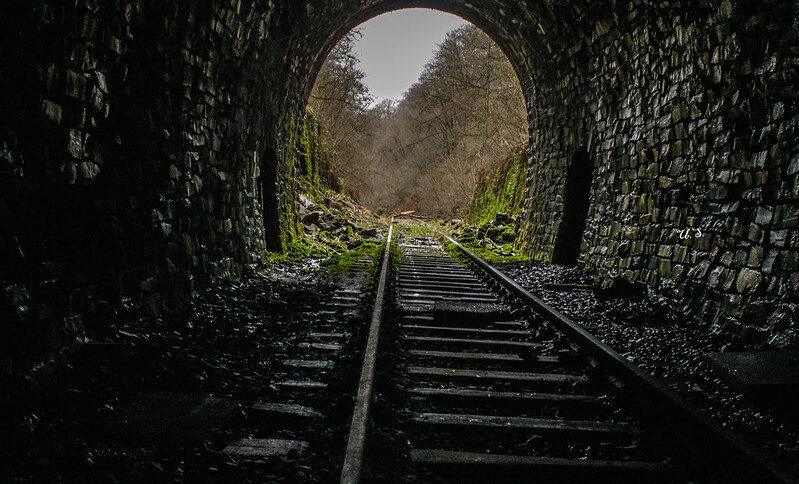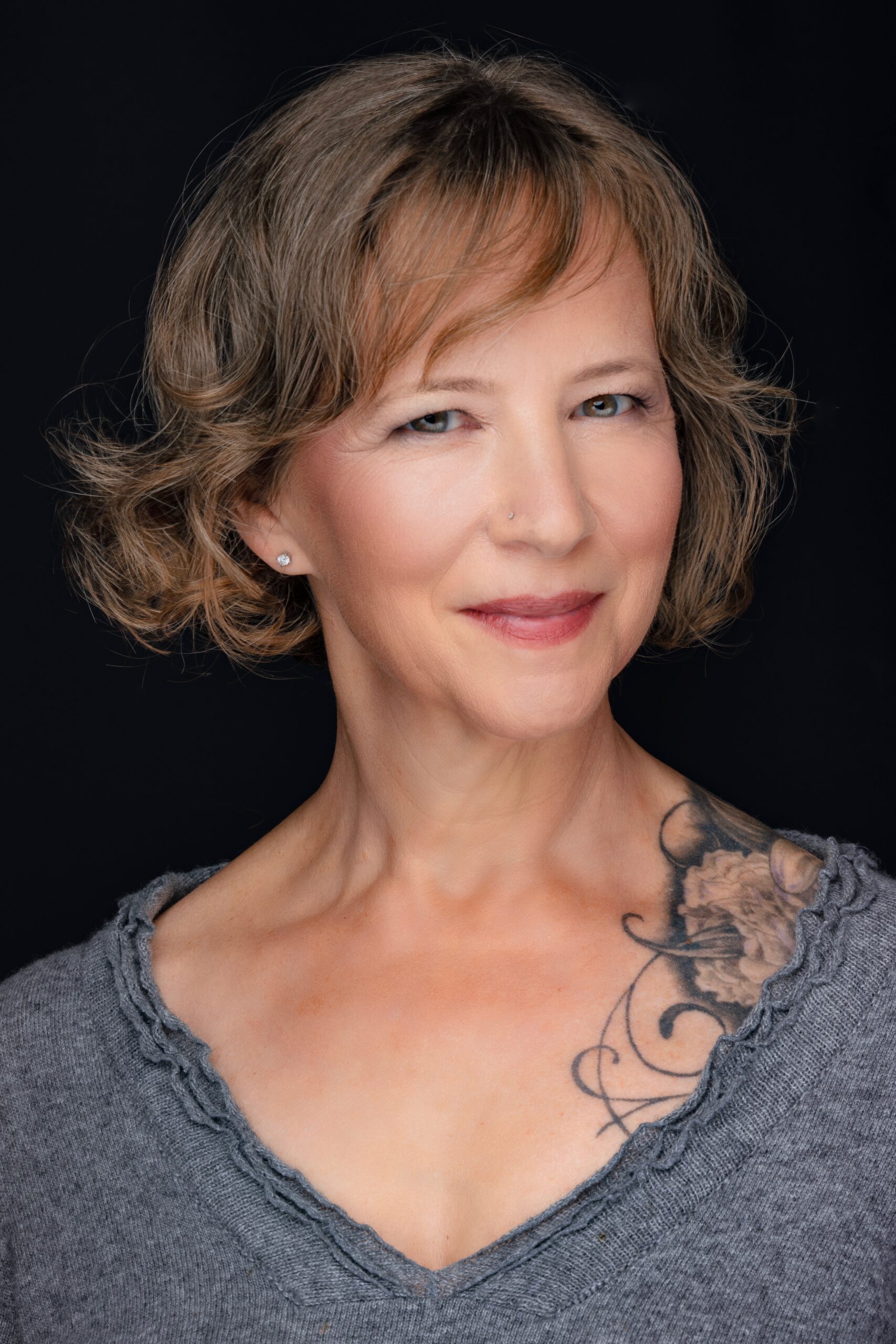Charting a Course in the Dark
By Therese Anne Fowler | January 29, 2025 |

As I write this, I await my editor’s feedback on my new historical novel. If you want to know the truth, I’m nervous. Because, while the draft does hew closely to the outline and intentions we agreed on when I sold this book on proposal, and while I did think the draft was ready for her to assess, the waiting allows my imagination to cook up all sorts of ugly scenarios and serve them to me fresh each day. Nature abhors a vacuum, or something like that.
My nervous imagination calls me a talentless hack. It suggests I quit writing and put my creative energy into making pottery—which, it reminds me, I’ll never have to show to the public, and wouldn’t that be a nice change? There are a lot of great things about being a published novelist, but there’s also this: having one’s work publicly and perpetually reviewed and reviewable by industry, media, and ordinary readers feels similar to how I imagine it would feel to live naked in a brightly lit glass house while observers broadcast their critical assessments of my not-sculpted, middle-aged body to the world. And, as with reality, they also make critical assumptions about my intelligence, intentions, and character.
I know I should be well past these insecurities. The Voice of Good Sense says, “Dude, what’s the problem?” (It likes to call me dude; it’s retro that way.) It reminds me, “This will be your eighth published book. You’re a professional. You got this.” But here’s why confidence is easier declared than embraced: every time I write a new novel, I honestly don’t know how I’m going to do it.
Fool that some might say I am, I don’t (maybe even can’t) write the same type of book over and over again. To date, the tally is three women’s fiction, two historical fiction, two contemporary general fiction. Even within genres, my approaches vary greatly. Had I been gifted with the trait that lets some authors write, say, only mysteries, or only thrillers, or only romances, I would at least have my genre conventions as framework for every book. I might, over time, achieve something like a mastery of my form. But, no; every time, I have to figure out anew just what it is I’m trying to build, and then figure out how to go about building it. Add to this stress the fact that I’m in a new editorial relationship at a new-to-me publishing home, and the Voice of Good Sense just can’t quite drown out the Voice of Anxiety.
And yet, I’m excited about this new book (especially now that it’s finally written)! I’m excited to have tried a new form and (maybe) succeeded with it. And so, while I wait to know whether I’m more deluded in my excitement or in my anxiety, I’m going to take this opportunity to talk about the scaffolding I stood on to construct this latest book.
From the time I conceived the story, which is inspired by my own family’s history, I knew its scope was large—even “epic,” given its time setting (WW1’s chaotic aftermath in eastern Europe and the Russian Civil War) and its multiple geographical settings. I knew the story was of an arduous journey—an odyssey, really—as experienced by one primary character. I also knew there were two important secondary characters who would get their own points of view. I had start points and end points of time and place. I had some hazy ideas of what might happen along the way. What I didn’t have a bead on was how to organize each character’s storyline into something cohesive and meaningful, which would then also have to entwine with the others’ in a cohesive and meaningful way.
By definition, an odyssey is “a long wandering or voyage usually marked by many changes of fortune.” On the face of it, this seems to be an easy-to-follow template for the kind of tale I envisioned. Set the characters on their journeys; give them many changes of fortune; et voila! In that simplicity, though, lies a hidden hazard: it’s easy to mistake the creation of a series of events for the creation of a compelling plotline that pulls readers in and carries them through.
 Some of you may have heard of The Perils of Pauline, the 1914 silent film series in which the titular character suffers a seemingly endless sequence of cliff-hanging hazards meant primarily to get people back into the theater for every new installment. What worked for a 1914 silent film audience does not, however, work so simply for a self-contained novel (i.e. not one of a series) in 2025 and beyond. My characters’ journeys needed strong, identifiable arcs—not to be confused with orcs, though those have also been useful to at least one author I can think of.
Some of you may have heard of The Perils of Pauline, the 1914 silent film series in which the titular character suffers a seemingly endless sequence of cliff-hanging hazards meant primarily to get people back into the theater for every new installment. What worked for a 1914 silent film audience does not, however, work so simply for a self-contained novel (i.e. not one of a series) in 2025 and beyond. My characters’ journeys needed strong, identifiable arcs—not to be confused with orcs, though those have also been useful to at least one author I can think of.
In case you’re thinking, “Duh, Therese,” know that this arc realization was not a revelation. I just didn’t know how to build an odyssey’s arc. So I went poking around the internet for craft tips, only to find (initially) that every search using the terms “odyssey” and “story” or “fiction” cued up endless results that feature The Odyssey and/or Odysseus. Not exactly what I was looking for. (But, you know, good on Homer for mastering internet SEO.)
I poked around some more. In truth, I don’t remember what all the pathway to useful knowledge included; the only concrete thing I have to show for that research is a little square note I wrote for myself and tacked to my bulletin board. It reads HOLST, the acronym for:
- Hardships
- Obstacles
- Losses
- Setbacks
- Triumph
It’s my distillation of the Hero’s Journey—a form which, as many of you surely know, has launched some wildly successful writing and filmmaking careers. HOLST is the Hero’s Journey stripped down, uncluttered by the usual directives for exactly which moment(s) which turn(s) of plot and character occur. HOLST is a non-formulaic formula, if you will, a plot map that allowed me a lot of room for creativity while still helping me to shape each character’s story arc in a definitive and compelling way. I offer it to you, for whatever it might be worth in your own writing journeys.
Creating meaningful art feels more crucial now than ever before in my lifetime. When I began this project, back in the summer of 2023, I didn’t want to believe that, come 2025, the lessons of the Great War era would be so acutely relevant. But I’m glad to have them in mind (forewarned is forearmed). Using my HOLST map, I wrote a novel that departs, somewhat, from the conventional historical novel form, but that borrows from a long tradition of compelling tales that are meant to say something important about what it means to be human in an unkind time and place.
I’d love to hear your thoughts on any of the above. Have you modified a genre form for your own work? Are you finding it easier or more difficult to write these days?
[coffee]










Hey Therese — I think one of my biggest revelations, as I (way too swiftly) approach the release of book three, is that it absolutely feels like starting over every damn time. I can’t believe I thought this gig would get easier. Should’ve known better.
Thanks for making me feel less alone. Wishing you the best with the new one!
Thanks, Vaughn! You are definitely not alone. But with each subsequent book, your confidence gets bolstered by the knowledge that you have, in fact, figured out how to do it in the past. Good luck with YOUR new one, too!
So the new novel is an historical odyssey? It’s a wide open story type. I’m curious to see how your HOLST idea spins out.
Until now, the main advice about building an odyssey was that it should have an effect summed up with the word “sweeping”. Nice, but what practical good is that?
What’s the title, BTW? Will look to preorder.
Ah, yes, the useless “sweeping!” When I gave my first editor, at Ballantine, the proposal pages for the book that would become Z, she declined to buy it, saying she wasn’t sufficiently “swept away.” I guess the broom is in the eye of the beholder?
This one’s called WHAT BECOMES OF US. Preorders will be very much appreciated (assuming that time ever comes)!
Hello Therese. You touch on many topics here, all of which are worthy of comment. HOLST is an intriguing, potentially useful acronym. It compresses the principal sources of tension and conflict in most if not all stories. It doesn’t prescribe how things happen, only what needs to. I am going to use it.
But what most interests me is this: “Had I been gifted with the trait that lets some authors write, say, only mysteries, or only thrillers, or only romances, I would at least have my genre conventions as framework for every book.”
You would also probably have a better shot at making more money. But IMO, writing in a single genre isn’t a gift so much as a straightforward business strategy. As you say, following such an approach serves to simplify the writer’s work. It gives it convenient shape by way of established conventions. I imagine the genre writer will protest that genre conventions confront the writer with an equally demanding challenge: how to be fresh and original, while observing the elements that readers of the genre expect and want.
Maybe so, but that doesn’t ring true for me. I may write another, but several years ago I tired of writing suspense/mysteries. I tried to make the four I wrote fresh by violating what was for me the coy, nudge-nudge-wink-wink aspect that called for plotting red herrings and blind alleys. In the end, I just got tired of being obliged to rely on murder, as all mysteries and thrillers do, even cozy mysteries. It came to seem a quick fix, one where the writer’s imagination is obligated to focus on dreaming up fresh new ways to kill off people.
So, good for you, Therese. Your path is more difficult, but in my view far more liberating to the imagination.
You’re so right, Barry, that I would’ve been able to make more money. There have been times when I’ve gotten frustrated with myself, because while I’ve somehow been fortunate enough to earn a pretty comfortable living from these books while bucking both convention and “wisdom,” I’ve also been keenly aware of how much greater my success might have been if I’d done as, say, Jodi Picoult did early-ish in her career and created a killer formula for selling massive numbers of books.
That said, your experience in tiring of writing just one kind of book is what I have avoided, and I do feel sort of stubbornly proud to have done well enough to get to keep writing full time.
Thanks for your thoughtful comments.
Therese, my favorite writers all have a great breadth of writing they do, from children’s to poetry to fiction and nonfiction for adults. So it is wonderful to see that you follow your muse. And it’s the truth that every new story has something to teach the writer of that story. And I wouldn’t want it any other way. I love learning and growing and will die pen in hand.
That’s the spirit!
Therese,
Thanks for putting your vulnerability on display. It really is a comfort. Kudos to you for continuing to stretch and learn!
Thanks, Liza. I wonder sometimes whether writing fiction is my calling or my curse! But I’m never not happy to have created something new out of the noise in my brain, which I guess is a sign of true love despite all. :)
Writing and publishing used to be a gift that many were able to accomplish. These days it feels more like a necessity. We need to write stories about good living and good choices. We have to keep hope and love alive. Thanks for your work. Enjoyed your last novel.
Thanks so much, Beth!
There’s so much power in story––for good use or ill. So I feel like my job is to keep adding weight to the good side of the scale. I can’t do much else to help, but I can do that.
Therese, you chose a cover image in which the light at the end, though much smaller than the dark tunnel that appears to surround it, attracts the viewer’s attention immediately and is clearly more compelling. Hmmm?
Anna, I didn’t choose that image; that was Kim Bullock’s doing when she set up the post for me. But either way, I’m not sure I understand what point you’re making/question you’re asking. Clarify?
Back when I thought you had selected the image, I imagined your inner wisdom choosing it by leapfrogging over the awfulizing your conscious mind was using to torture you.
Therese, I have confidence in you even though your confidence in yourself is a bit shaky right now. I look forward to reading this new book.
As you know, I am retiring from writing to publish. Right now I get satisfaction from publishing on Substack. And Monday, just for fun, I start a class in writing cozy mysteries. I have only published two books, but they are wildly different in genre. So, no, I do not stick to a single genre.
Your explanation of your characters’ odysseys is tantalizing. Can’t wait to read.
Thank you, my friend. I so admire your continuing commitment to writing for pleasure, and your curiosity/willingness to try something new!
Wow, Therese, I’m vibe-ing so hard with this post. I, too, have to figure out (with each new project) “just what it is I’m trying to build.” Every book is a new mountain to climb–a thrilling but also terrifying adventure/challenge. Thanks for sharing your creative self with all of us.
Thank you, Lisa. Keep climbing!